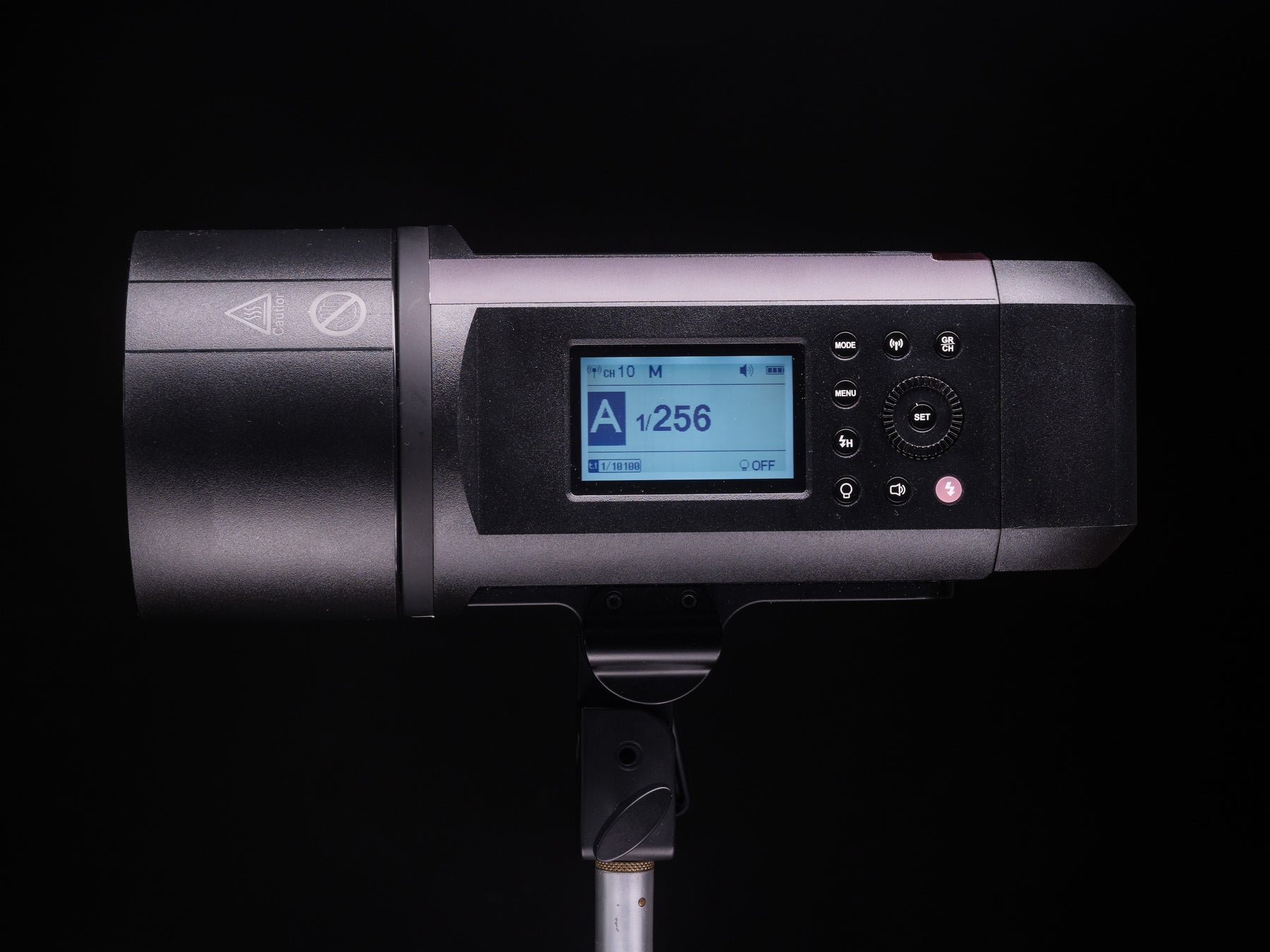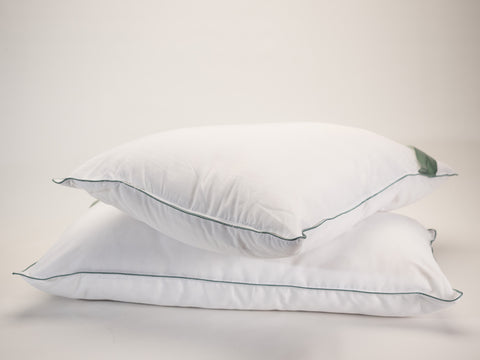Call Us: London / Leeds / Birmingham

Godox AD600 Pro Review
by Michael Sewell
Okay, so I know the Godox AD600 Pro TTL and its variants have been around for quite a while. (It became available at the beginning of 2018), and it was certainly a highly anticipated bit of kit. When it was announced, there were a number of key features that caught my eye, such as the 0.9sec recycle time at full power output, new bulb design and dome, better bulb positioning, flash duration indication, colour consistency and more.
Four years on, and how is it holding up?

I always rather liked the original Godox AD600 incarnation (launched two years earlier), although I did find the stand locking mechanism a bit clunky due to the ratchet-like system. That has been replaced with a locking system that is smooth as silk and locks very quickly and solidly. The overall look and feel are best described as “slick”, and somewhat reminiscent of the last Bowens lights to be manufactured, the X series. Well, if you squint a bit.
It feels incredibly solid, and the standard reflector feels like an integral part when fitted. It doubles as a tube protector when the protective cap is fitted to the reflector. I found that to be a nice touch, as I would no longer have to take a cap and a standard reflector on location. Less space and weight are always good. Talking about the bulb, with the dome in place, it does look kind of massive! But looking at it carefully, the frosting is applied to the front flat face of the dome, which definitely helps with the light dispersion from the tube coils when compared with the original. The dome seems to fill the standard reflector, and your eye is soon drawn to the rather large yellow circle behind the flash tube. A 38w LED modelling light. As modelling lights go, it's extremely bright! It's much brighter than a lot of my standard studio heads, so it has real-world application, as opposed to a number of modelling lights found on some portable battery flash heads. It can be set to a pre-set level or vary according to the power output of the head.

One thing I found a little awkward about the original Godox AD600 was the fact there was no handle, so it tended to be a two-handed affair when handling the head, such as fitting it to a larger softbox etc. On the AD600Pro we have an optional handle available, that bolts onto the underneath of the head at the rear. The lack of a handle was a definite downside on the original, and something I regularly lamented at the time.
Now, as a commercial photographer, I tended to stay away from IGBT lights for the more colour sensitive work, basically because the colour temperature would drift towards blue as the power was turned down. Some heads are worse than others, and if you mix IGBT heads with voltage-controlled (full flash curve) heads, you can see the colour difference, sometimes quite dramatically. With this in mind, the colour accuracy mode that featured quite heavily in the AD600 Pro launch was something that piqued my interest.

According to the specs, in standard mode, the colour temperature is only supposed to fluctuate by +/-200k from the stated 5600k. Yeah, I kind of smirked to myself when I read that, because, at the time of the launch, every manufacturer tended to state the same, come what may. However, I will come back to that later.
I had a Sekonic Spectromaster C-700 colour meter to hand. Well, to be more accurate, Marcin Wozniak had the meter with him when he brought the light for review. We used both the standard reflector and one of the studio softboxes to check the output, bearing in mind an ageing silk on a softbox can warm the light.
With the standard reflector fitted, and the power dialled down to the lowest output possible, which is 1/256th and in standard mode, the colour meter gave us a reading of 5759k, which is within the promised +/-200k of the stated 5600k. I have to admit I was quite impressed even with the standard colour mode, particularly when the light has been dialled down to the minimum, which is where the greatest variance tends to occur.

Switching to the colour consistency mode and re-testing, the meter gave us a reading of 5587k.

Wow! 13 kelvin short of hitting the nail on the head. Now that's impressive. And using the softbox gave us 6076k in colour consistency mode, and 6134k in standard mode, so my softbox was about 500k out. I'm not that surprised.
But what does it actually mean?


The first image is using colour consistency, whereas the second image is using standard mode. There is a very subtle blue shift on the pillow with the AD600 Pro frame left. There are two voltage-controlled heads in use, one frame right and one frame top. I have to hold my hand up and point out that this is actually a very small shift to blue compared to a number of other IGBT based heads I had used prior to the launch of the AD600 Pro, and I was very impressed with the colour consistency, even in standard mode. I did wonder if using the colour consistency mode made any difference to the recycle time. Nope. It still nailed around 0.9sec at full whack.
So, what about output accuracy when changing power output levels?
Using the standard reflector, and a Polaris Karat lightmeter, placed thirty inches from the front of the reflector, I recorded the following results with the meter set to a sensitivity of ISO200:

Very consistent, and the slight change in decimal point is more likely down to the subtle movement of the meter during the test. Pretty much bang on.
I did wonder if the HSS mode would be an issue with the colour temperature because when HSS is selected, it automatically disables the Colour Consistency mode. At full power output with the standard reflector and in HSS, we recorded 5627k, and at 1/256th output, we recorded 5696k. Personally, I found that very impressive.
The last thing to do was to shove someone in front of the light and see what sort of a job it does with skin tones. Meet Marcin Wozniak again, a reluctant model. AD600 Pro frame left with Godox 90cm Square Softbox at 1/32nd output and a reflector frame right.

Ultimately, this portable studio flash delivered exactly as promised, and outperformed an awful lot of the also-rans. Even in HSS the accuracy was there. I loved the aesthetics, the recycle time, the displayed light duration, the LED modelling light, the menu system and far more than I can actually recall.
The colour consistency is now matched by other Off-Camera Flash (OCF) units, such as Elinchrom with their ELB 500 TTL, which I reviewed previously HERE. I have to say, the AD600 Pro has stood the test of time extremely well. I used it in various scenarios such as the following product shot.

Textiles are a good litmus test for colour consistency, mainly because textile clients will know if their product is correctly coloured, or not. And they can spot a 100 degrees kelvin difference a mile off, I kid you not!
And it was a textile shoot that showed up a bit of a challenge for my style of shooting.

For this image of a bolt of cloth, I had a large overhead softbox, and then a large gridded reflector frame right. The issue I had, was down to the weight of the head, which meant I had to counterbalance with a sandbag etc. and I still felt a little uneasy working below it.

I ended up swapping out the overhead light for an Elinchrom ELB 500 TTL, which weighs little more than a gasp of air, and the AD600 Pro was used for the accent light. Now bear in mind that this is my personal choice, because I'm lugging kit all over the country most days of the week, and a lot of my shoots end up requiring overhead lighting, such as food etc.
I have to say, the weight was the only negative aspect I found with Godox AD600 Pro. Although the weight isn't particularly heavy at 3Kg, taking four or five on a location shoot could be tiresome, and bear in mind you also have to take 3Kg of ballast to counter-weight the boom arm too. Where the head is simply sat on top of a light stand, it was fine, and gave excellent results every time, making it a fantastic battery-powered strobe for location shots, such as this...

I certainly have a great deal of respect for the AD600 Pro. It set the bar when it was launched, and it's still holding its own admirably. You can purchase the AD600 Pro and other Godox products from The Flash Centre HERE.
More from
Product title
Out of Stock
Product title
Out of Stock
Product title
Out of Stock
Product title
Out of Stock
Product title
Out of Stock
Product title
Out of Stock
Product title
Out of Stock
Product title
Out of Stock
Product title
Out of Stock
Product title
Out of Stock
Product title
Out of Stock
Product title
Out of Stock
Product title
Out of Stock
Product title
Out of Stock
Product title
Out of Stock
Product title
Out of Stock
Product title
Out of Stock
Product title
Out of Stock
Product title
Out of Stock
Product title
Out of Stock
Product title
Out of Stock
Product title
Out of Stock
Product title
Out of Stock
Product title
Out of Stock
Product title
Out of Stock
More from The Flash Centre
-

TFC’s Guide to Colorama Background Paper
Read nowDiscover how to get the most out of your Colorama backgrounds with studio-tested lighting techniques, creative colour effects, storage tips, and essential accessories. From clean high-key whites to dramatic gradients and gelled backdrops, this guide shows you how to transform a simple roll of paper into a powerful creative tool for portraits, products, fashion, and more.
-

Black Friday 2025 Photography Deals: Top Studio Lighting & Flash Kits You Can’t Miss
Read nowBlack Friday 2025 is here, the perfect time to upgrade your studio lighting, expand your off-camera flash kit, or invest in versatile video and content creation lights. Whether you’re shooting portraits, products, events, or streaming content, our hand-picked top 10...
-

My Accidental Journey Into Photography
Read nowAs part of The Flash Centre’s 45-year celebration, TFC's Mike Rowley shares his personal journey behind the lens, from borrowing cameras as a curious beginner to discovering the creative rewards printing his own work. Discover how photography shaped his career, why slowing down with film reignited his creativity, and what he’s learned after 16 years at TFC.



